#Church of the Holy Sepulchre
Text

Cubes, cupolas, corners and curvatures
Jerusalem, October 2019
#photographers on tumblr#original photographers#photography#architecture photography#jerusalem#church of the holy sepulchre#church#arches#church architecture#architecture
100 notes
·
View notes
Text

A nun attends the Catholic Washing of the Feet ceremony during Easter Holy Week in the Church of the Holy Sepulchre in Jerusalem's Old City on March 28, 2024 [Ronen Zvulun/Reuters]
#religion#christianity#catholicism#christians#nuns#women#people#holy week#church of the holy sepulchre#jerusalem#divinum-pacis
7 notes
·
View notes
Text

Church of the Holy Sepulchre in Jerusalem, Palestine
German vintage postcard
#vintage#tarjeta#church#sepulchre#briefkaart#postcard#photography#postal#carte postale#german#palestine#sepia#holy#ephemera#historic#church of the holy sepulchre#ansichtskarte#postkarte#jerusalem#postkaart#photo
9 notes
·
View notes
Text
~This photo was taken at the Church of the Holy Sepulchre on a pilgrimage in May, 2019. I don't know the pilgrim who took it, but I saw it at the time, as it was passed to some of us there. I was one of the pilgrims in this group and can verify that there was no one standing at the doors to the Tomb of Christ; after the person took the photo with a camera phone,
this figure was in the photo.~
(Click on the picture to view the video.)
(Video posted by John Lau)
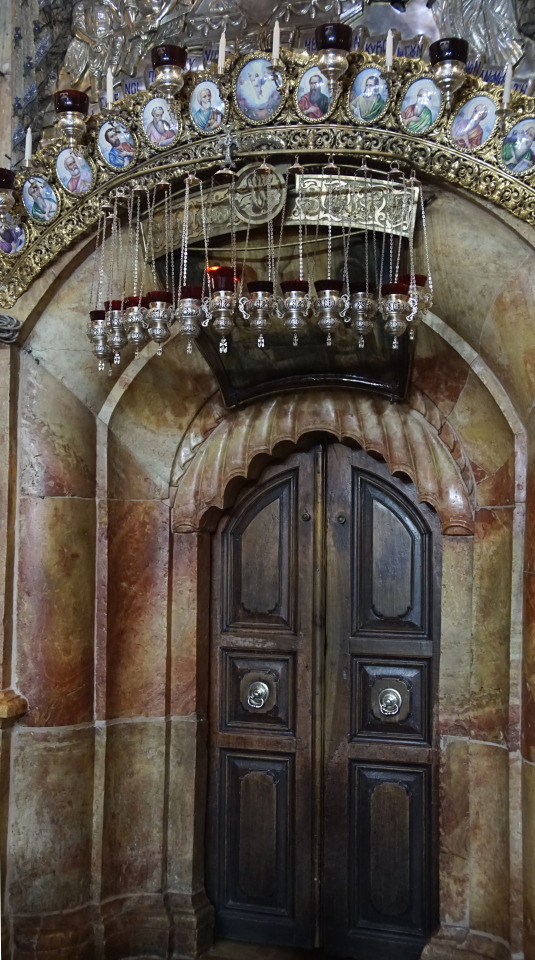
~This is my photo of the doors. There was no one standing there.~
(Photo © dramoor May 4, 2019, Tomb of Christ, Church of the Holy Sepulchre, Jerusalem)
#Lord Jesus Christ#miraculous photo#pilgrimage to the Holy Land#206 Tours#Jim Caviezel#Fr. Donald Calloway#Christian#Tomb of Christ#Church of the Holy Sepulchre#travel#Israel#photography#photographers on tumblr#Videos#Jesus Christ is the Son of God#Jesus Christ is the Savior of the world
17 notes
·
View notes
Text

What did Jerusalem’s main road look like about 1,500 years ago?
An archaeological excavation conducted by the Israel Antiquities Authority in 2010 near the Old City’s Jaffa Gate brought to life a 1,500 year-old map.
The Madaba Map is an ancient mosaic map that paves the floor of Saint George’s Church in the city of Madaba, Jordan.
The map, created in 6th-7th centuries CE, depicts the Land of Israel during the Byzantine period.
It clearly shows the entrance into Jerusalem from the west via a central single gate that led to the main street of the city.
In the past, the reliability of the map, which, among other buildings, provides the earliest visual description of the Church of the Holy Sepulchre, has been questioned.
The excavation, located near David Street known to tourists as the terraced shopping street exposed for the first time, archaeological evidence of Jerusalem’s central street from about 1,500 years ago.
The salvage excavation, carried out in the wake of infrastructure works undertaken in the area and funded by the Jerusalem Development Authority, gave the archaeologists and the public a rare glimpse into archaeological remains underlying the asphalt and the paving stones.
Familiar with the Madaba Map, Dr. Ofer Sion, Director of the Excavation on behalf of the Israel Antiquities Authority, suspected that the ancient main street underlay the modern road.
"After removing a several archaeological layers, about 4.5m below modern street level, we were excited to discover the large stone slabs, each about one meter long, that were part of the ancient street.
It’s great to see that today’s bustling David Street preserves the route of the Byzantine-period busy street from 1,500 years ago.”
The Madaba Map, whose extant part measures 16x5m, depicts the land of Israel as known to the mosaic artist.
Map encompasses the entire country, with emphasis on Jerusalem and its Christian sites.
It shows that many churches were first constructed in Jerusalem during this period, when city underwent a religious transformation from a pagan to a Christian city.
The churches can be identified by their red tiled roofs illustrated on the map.
© Israel Antiquities Authority
#Madaba Map#Jerusalem#Israel Antiquities Authority#Old City#Jaffa Gate#archaeological excavation#archaeology#ancient mosaic map#mosaic map#Israel#Byzantine period#Saint George’s Church#Church of the Holy Sepulchre#Jerusalem Development Authority#ancient main street#streets#churches#maps#6th century#7th century
7 notes
·
View notes
Text

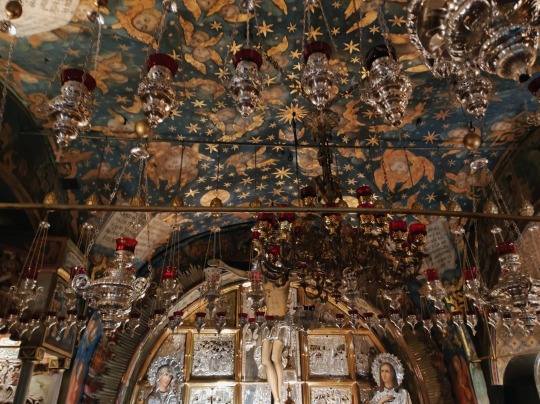
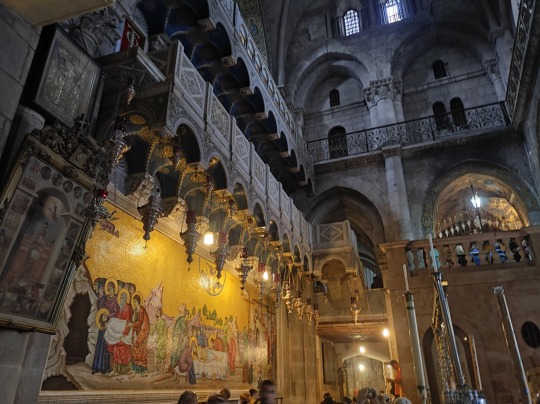

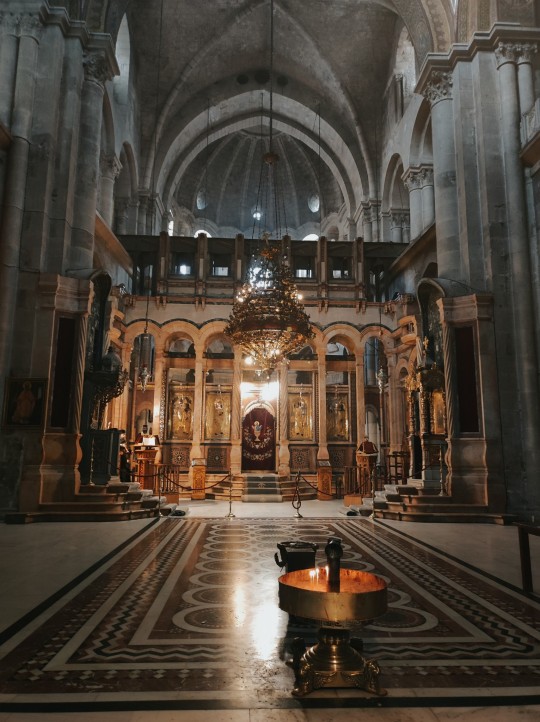
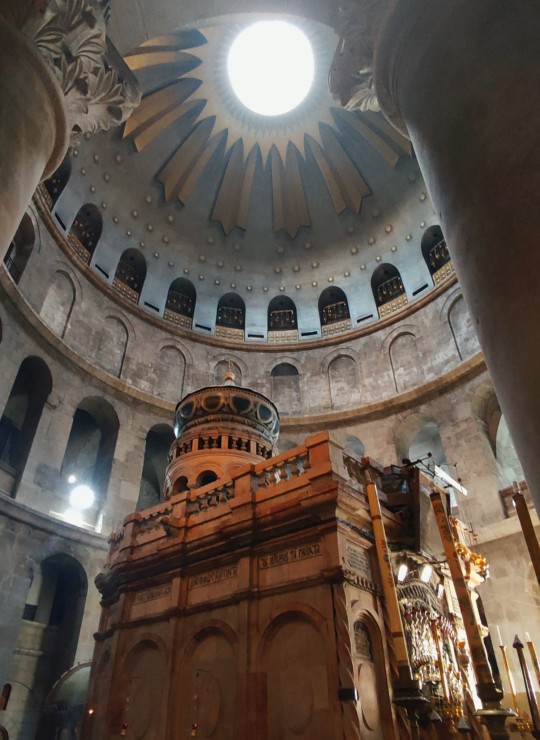
Church of the Holy Sepulchre, Jerusalem
25 notes
·
View notes
Text
Beautiful Journey—Israel#4—The western "wailing" wall
The western wall is a unique religious site called the "Wailing Wall" in Jerusalem and the best itinerary acknowledged by travelers. Also, the only remaining over 2,000 years old outer wall of an ancient Jewish temple is made of limestone.
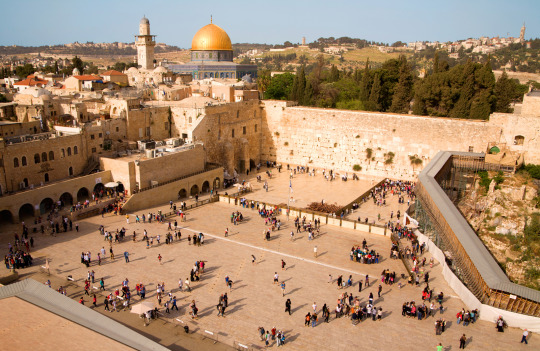
View On WordPress
#ancient Israel#attractions#Church of the Holy Sepulchre#Dome of the Rock#Israel#journey#limestone#Mount of Olives#Old City#Tel aviv#travelers#Via Dolorosa#wailing#western wall
3 notes
·
View notes
Text
Jerusalem, Israel
#jerusalém#israel#historical tourism#heritage tourism#mount Zion#mt Zion#Damascus gate#garden tomb#dome of the rock#Solomon’s temple#wailing wall#church of the holy sepulchre#Via Dolorosa#mount of olives#dormition abbey#jesus#christianity#muslim#crucifixion#resurrection#travel#travelfacts#tourism#worldfacts#naturaltourism
2 notes
·
View notes
Text
Jerusalem Old City
One of the holiest and most contentious places on earth, the Old City of Jerusalem is a hugely historic area, significant to Christians, Jews and Muslims. Visiting it can be overwhelming, in terms of the maze of streets and number of people, including many tour groups.
There are four main gates into the Old City, and a number of smaller gates. The Damascus Gate was the original entrance to the…

View On WordPress
#Armenian Quarter#Church of the Flagellation#Church of the Holy Sepulchre#Damascus Gate#Dome of the Rock#Ethiopian Monastery#Israel#Jaffa Gate#Jerusalem#Jewish Quarter#Muslim Quarter markets#Old City Jerusalem#Old Jerusalem#photography#Temple Mount#The Citadel#travel#Western Wall#Western Wall Tunnel Tour The Great Stone Tour
0 notes
Photo

New article has been published on https://www.bibleblender.com/2023/bible-stories/new-testament/matthew/death-burial-jesus-matthew-27-45-27-66
The death and burial of Jesus (Matthew 27:45 - 27:66).

Pilate told them, “Take a guard of soldiers and make it as secure as possible.” So they went with soldiers of the guard and made the tomb secure by sealing the stone.
#Arimathea#Chief Priests#church of the holy sepulchre#earthquakes#elijah#jesus#Jesus death#Mary Magdalen#Pilate#roman army
0 notes
Text
#9 Tomb of Mary
On the east side of Jerusalem there is a deep valley and ravine called the Kidron Valley or the Valley of the Cedron. Part of it is also called the Valley of Josaphat. There are olive groves and cemeteries on the other side of the valley. The Garden of Gethsemani was an olive grove.
Church of the Sepulchre of Saint Mary
North of the Garden of Gethsemani there are some first century tombs cut…
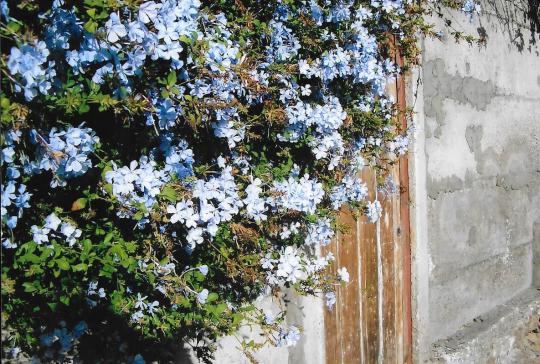
View On WordPress
1 note
·
View note
Text
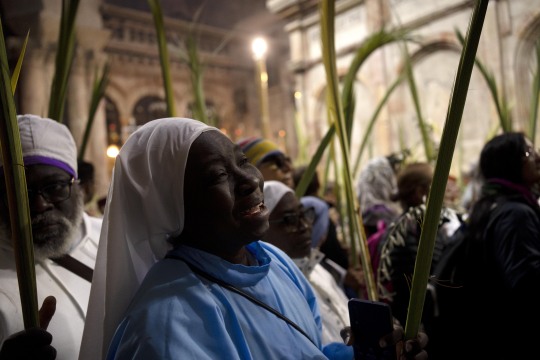
April 2023: A nun sings during Palm Sunday Mass in the Church of the Holy Sepulchre, where many Christians believe Jesus was crucified, buried and rose from the dead, in the Old City of Jerusalem. [Maya Alleruzzo/AP Photo]
#religion#christianity#catholicism#christians#nuns#women#people#palm sunday#church of the holy sepulchre#jerusalem#divinum-pacis
50 notes
·
View notes
Text
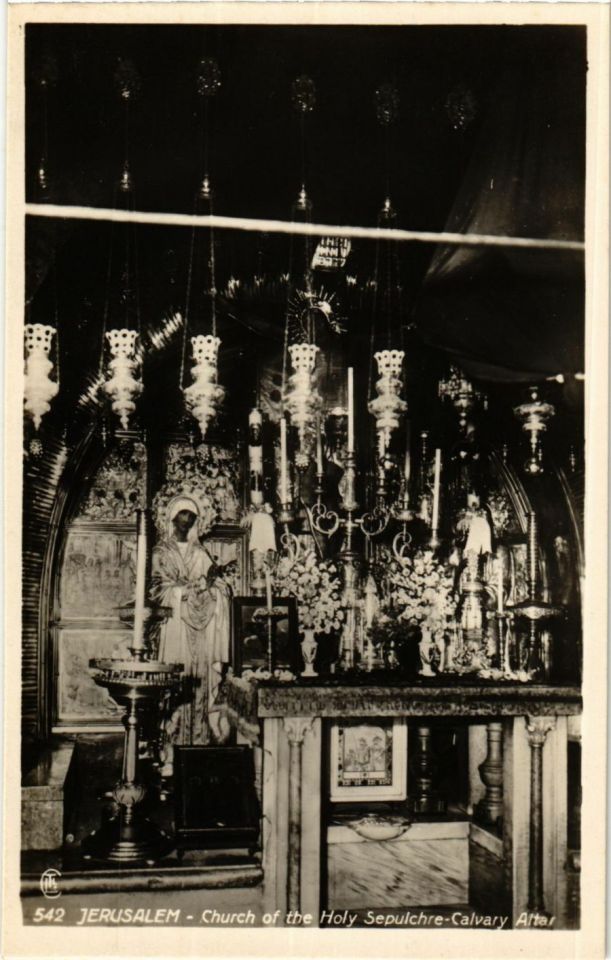
Church of the Holy Sepulchre in Jerusalem, Palestine
British vintage postcard
#postkaart#church#carte postale#sepulchre#briefkaart#old#sepia#postkarte#vintage#postal#british#photography#jerusalem#holy#ephemera#palestine#postcard#church of the holy sepulchre#tarjeta#photo#ansichtskarte#historic
7 notes
·
View notes
Text
youtube
#Church of the Holy Sepulchre#Jerusalem Israel#churches#Christian#Orthodox#Tomb of Christ#Lord Jesus#videos#YouTubes#Youtube
9 notes
·
View notes
Text


Visitors admire the newly restored Edicule on 21 March 2017. The floor beneath the shrine is at risk of structural failure, scientists warn.
📷: Oded Balilty, AP for National Geographic
By Kristin Romey
8 September 2023
Over the centuries, Jerusalem’s Church of the Holy Sepulchre has suffered violent attacks, fires, and earthquakes.
It was totally destroyed in 1009 and subsequently rebuilt, leading modern scholars to question whether it could possibly be the site identified as the burial place of Christ by a delegation sent from Rome some 17 centuries ago.
The results of scientific tests provided to National Geographic appear to confirm that the remains of a limestone cave enshrined within the church are indeed remnants of the tomb located by the ancient Romans.
Mortar sampled from between the original limestone surface of the tomb and a marble slab that covers it has been dated to around A.D. 345.
According to historical accounts, the tomb was discovered by the Romans and enshrined around 326.
Until now, the earliest architectural evidence found in and around the tomb complex dated to the Crusader period, making it no older than 1,000 years.

While it is archaeologically impossible to say that the tomb is the burial site of an individual Jew known as Jesus of Nazareth, who according to New Testament accounts was crucified in Jerusalem in 30 or 33, new dating results put the original construction of today's tomb complex securely in the time of Constantine, Rome's first Christian emperor.
The tomb was opened for the first time in centuries in October 2016, when the shrine that encloses the tomb, known as the Edicule, underwent a significant restoration by an interdisciplinary team from the National Technical University of Athens.

People line up to visit the renovated Edicule, the shrine that houses what is believed to be the tomb of Christ.
📷: Oded Balilty, AP for National Geographic
Several samples of mortar from different locations within the Edicule were taken at that time for dating, and the results were recently provided to National Geographic by Chief Scientific Supervisor Antonia Moropoulou, who directed the Edicule restoration project.
When Constantine's representatives arrived in Jerusalem around 325 to locate the tomb, they were allegedly pointed to a Roman temple built some 200 years earlier.
The Roman temple was razed and excavations beneath it revealed a tomb hewn from a limestone cave.
The top of the cave was sheared off to expose the interior of the tomb, and the Edicule was built around it.
A feature of the tomb is a long shelf, or "burial bed," which, according to tradition, was where the body of Jesus Christ was laid out following crucifixion.
Such shelves and niches, hewn from limestone caves, are a common feature in tombs of wealthy 1st-century Jerusalem Jews.
The marble cladding that covers the "burial bed" is believed to have been installed in 1555 at the latest, and most likely was present since the mid-1300s, according to pilgrim accounts.
When the tomb was opened on the night of 26 October 2016, scientists were surprised by what they found beneath the marble cladding: an older, broken marble slab incised with a cross, resting directly atop the original limestone surface of the "burial bed."

A conservator cleans the surface of the stone slab venerated as the final resting place of Jesus Christ.
📷: Oded Balilty, AP for National Geographic
Some researchers speculated that this older slab may have been laid down in the Crusader period, while others offered an earlier date, suggesting that it may have already been in place and broken when the church was destroyed in 1009.
No one, however, was ready to claim that this might be the first physical evidence for the earliest Roman shrine on the site.
The new test results, which reveal the lower slab was most likely mortared in place in the mid-fourth century under the orders of Emperor Constantine, come as a welcome surprise to those who study the history of the sacred monument.
"Obviously, that date is spot-on for whatever Constantine did," says archaeologist Martin Biddle, who published a seminal study on the history of the tomb in 1999. "That's very remarkable."
During their year-long restoration of the Edicule, the scientists were also able to determine that a significant amount of the burial cave remains enclosed within the walls of the shrine.
Mortar samples taken from remains of the southern wall of the cave were dated to 335 and 1570, which provide additional evidence for construction works from the Roman period, as well as a documented 16th-century restoration.

Franciscan priests visit the traditional site of Jesus' tomb during its renovation in the Church of the Holy Sepulchre.
📷: Oded Balilty, AP for National Geographic
Mortar taken from the tomb entrance has been dated to the 11th century and is consistent with the reconstruction of the Edicule following its destruction in 1009.
"It is interesting how [these] mortars not only provide evidence for the earliest shrine on the site but also confirm the historical construction sequence of the Edicule," Moropoulou observes.
The mortar samples were independently dated at two separate labs using optically stimulated luminescence (OSL), a technique that determines when quartz sediment was most recently exposed to light.
The scientific results were published by Moropoulou and her team in 2018 issue of the Journal of Archaeological Science: Reports.
NOTE: This article was originally published on 28 November 2017 and updated to reflect the publication of the journal article on the dating of the mortar.
#Jesus#Tomb of Jesus#Church of the Holy Sepulchre#Jerusalem#limestone cave#Jesus of Nazareth#Edicule#National Technical University of Athens#Antonia Moropoulou#Crusader period#Ancient Rome#Martin Biddle#optically stimulated luminescence (OSL)#Journal of Archaeological Science: Reports#archaeology#Emperor Constantine#National Geographic#AP#Oded Balilty#tomb#mortar#restoration#renovation#holy site
3 notes
·
View notes
Text

World Changing Events : July 15
There are some very noteworthy and world changing
events , literally , that have occurred on this date :
July 15. Some of the events that are highlighted
below was actually a fulfillment of Biblical prophecy.
Here's a wiki link to this date's page , and within
that page are many more links that you can do
some exploring about the topics contained therein .
Enjoy !
Here are a few of the topics that changed the world :
70 – First Jewish–Roman War: Titus and his armies breach the walls of Jerusalem. (17th of Tammuz in the Hebrew calendar).
{ SEE the Gospel of Luke 21 for the prophecy from Jesus. }
1099 – First Crusade: Christian soldiers take the Church of the Holy Sepulchre in Jerusalem after the final assault of a difficult siege.
1149 – The reconstructed Church of the Holy Sepulchre is consecrated in Jerusalem.
1799 – The Rosetta Stone is found in the Egyptian village of Rosetta by French Captain Pierre-François Bouchard during Napoleon's Egyptian Campaign.
1941 – The Holocaust: Nazi Germany begins the deportation of 100,000 Jews from the occupied Netherlands to extermination camps.[4]
.................................................
For personal reasons , I am adding the following :
1806 – Pike Expedition: United States Army Lieutenant Zebulon Pike begins an expedition from Fort Bellefontaine near St. Louis, Missouri, to explore the west.
~ ~Below is a copy/paste from wiki : ~ ~
Pike in Colorado
" On November 15, Pike recorded the first sight of the distant mountain Tava which he called "Grand Peak".[7] It has since been called Pikes Peak in his honor. Pike tried to climb the peak, hoping to get a view of the surrounding area to record on maps, the 14,000-foot (4,300 m) summit. Pike's group ascended a lesser summit nearby—likely Mount Rosa.[8] With winter threatening, Pike pressed onward up the Arkansas, and on December 7 the party reached Royal Gorge, a spectacular canyon on the Arkansas at the base of the Rocky Mountains. "
#On this date#History#Biblical History#Jerusalem#Church of the Holy Sepulchre#Nazi Germany#Rosetta Stone#Colorado#Pikes Peak#US History#Bible Prophecy#Christian#World History#Jesus
1 note
·
View note